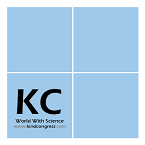Theme: “Recent advancements of research and treatment in the field of nephrologyâ€
World Nephrology 2023
WORLD NEPHROLOGY 2023 is a global conference on Nephrology that aims to bring together experts, researchers, doctors, and students from all over the world to attend the WORLD NEPHROLOGY 2023 conference on May 25-26, 2023 at Singapore city, Singapore. Thus, to share the most recent trends and innovations in kidney health, as well as practical research development experiences. We cordially invite all experts from around the world to attend this summit, which will feature keynote speeches, speaker presentations, poster presentations, and exhibitions. Many interesting lectures by participants, Keynote lectures, Oral speakers, and a short note by eminent personalities from around the world will be presented at WORLD NEPHROLOGY 2023. We hope that you will take advantage of this year's Conference to rekindle existing connections and forge new ones with colleagues from around the world.
The goal is to provide a summary of the most recent research developments while also outlining future directions in the field of Nephrology. We are confident that you will enjoy the Conference and that your interactions with colleagues from around the world will stimulate the exchange of ideas with experts.
Finally, WORLD NEPHROLOGY 2023 serves as a platform for global communication and collaboration among young researchers, engineers, and students.
Target Audience:
- Nephrologists
- Kidney coordinators
- Renal Transplantation surgeons
- Physicians
- Scientists
- Nephrology Associations and Societies
- Business Entrepreneurs
- Training Institutes
- Software developing companies
- Manufacturing Medical Devices Companies
- Data Management Companies
- Students
Track 1: Nephrology and Therapeutics
Nephrology is a branch of medicine that focuses on the diagnosis and care of nephrology illnesses. It deals with infections of the kidneys and bladder. The level of the T12 to L3 vertebral bodies corresponds to the retroperitoneal location of the kidneys. The fibrous capsule surrounding the kidney is encircled with Pararenal fat. The kidney can be divided into two parts: the renal sinus, which contains the renal pelvis, calyces, renal arteries, nerves and per renal fat, and the renal parenchyma, which includes the renal cortex and medulla. Cortex and medulla make up the two layers of this renal parenchyma. Inadvertently, the renal cortex is located beneath the case, and the renal medulla is made up of 10–14 renal pyramids, which are divided from one another by renal segments, an expansion of the renal cortex. The kidneys provide several crucial functions, such as the filtration and elimination of metabolic waste products (urea and ammonium), regulation of vital electrolytes, fluid, and corrosive base balance, and stimulation of red platelet production. Additionally, they help regulate the renin-angiotensin-aldosterone system, which controls water absorption and maintains intravascular volume. Additionally, the kidneys reabsorb glucose and amino acids and activate erythropoietin, calcitriol, and vitamin D to function as hormonal organs.
Track 2: Acute Kidney Injury
Acute Kidney Injury (AKI), also known as acute renal failure, is a sudden and unexpected loss of kidney function that occurs within seven days. Acute renal failure, formerly known as acute kidney injury, is a condition marked by an abrupt loss of the kidney's excretory function. It is typically identified by an increase in urea and creatinine levels, a decrease in urine production, or both. Acute kidney damage can cause a variety of issues with the kidneys, such as elevated potassium levels, metabolic acidosis, adjustments to the body's fluid balance, uraemia, as well as impacts on other body systems that ultimately result in mortality. Acute kidney injury sufferers may develop chronic renal disease more frequently in the future.
Track 3: Nephrology Nursing
Nephrology Nursing is a deliberate effort to broaden nursing knowledge through the systematic discovery of new information. It consists of better patient care, decreased cost of providing renal treatment, Accountability and litigation protection, Improvement of nursing as a profession and addition to the body of nursing knowledge already in existence. The area of nursing known as "renal care nursing" is dedicated to providing the sickest or most unstable chronic kidney patients with the highest level of care. Contamination revulsion and nursing consideration is a functional (as opposed to scholastic) sub-order of the study of disease transmission that is concerned with preventing nosocomial or health awareness linked sickness. Infants that require advanced restorative treatment are frequently admitted to a special section of the clinic called Neonatal Serious Care and Nursing care. The supporting factor in nursing consideration that is selective: Critical thinking Medical assistants fill a variety of positions in a wide range of situations, including bedside clinicians, attendant teachers, medical assistant analysts, assistant supervisors, clinical medical assistant authorities, and medical assistant professionals. The goal of Measurements of Renal care Nursing is to provide staff with accurate, current, and useful information and accommodations so they can outperform expectations during discriminating consideration training.
Track 4: Clinical Nephrology
A subspecialty of therapeutics and pediatrics known as clinical nephrology focuses on the study of kidney function, nephrology disorders, their treatment, and the care of renal transplant recipients (dialysis and kidney transplantation). With their sophisticated network of tubes and tubules that filter blood of its waste products and excess water, kidneys perform a crucial function for survival. The fluids, electrolytes, and corrosive base direction that the kidneys maintain are affected by kidney disease conditions, medications, and toxins in addition. Nephrology disorders oversee the study of the normal function of the kidneys and its illnesses. contaminants in the kidneys kidney, bladder, and urethral cancers, renal effects of diseases like diabetes and hypertension, uneven properties of acid and base, Nephritis and nephritic disorder adverse effects of drugs and toxins on the kidneys, Dialysis, which includes hemodialysis and peritoneal dialysis, and its long-term problems Lupus, immune system vasculitis, and other autoimmune disorders. Large growths or liquid-filled sacs that are shaped inside the kidney and hinder its functions are known as polycystic kidney infections. This condition is congenital and inherited or genetic.
Track 5: Pediatric Nephrology
Acute kidney damage is a common consequence in paediatric and neonatal critical care units where renal transplantation therapy is routinely used in children whose supportive medication falls short of meeting their metabolic needs. Due to the procedure's simplicity, peritoneal dialysis is typically favoured for children undergoing kidney transplants. Peritoneal nephrology dialysis is more desirable in the majority of pediatric end-stage renal nephrology diseases since it can be performed at home.
Track 6: Kidney Stones
The formation of kidney stones, also known as "Nephroliths" or "Renal calculi" in the urine is caused by the buildup of too many minerals. There are several instances where the growth of stones involved the urethra, bladder, and ureters, proving that one cannot restrict stones to just the kidney meeting. There were 49 million reported cases of kidney stones in 2013. Around 15,000 people died as a result, all throughout the world. The painful condition known as renal cramps, which occurs between the ribcage and the hip or between the belly and the upper thigh on either side of the body, is one of the kidney stone proximity's precursory side effects.
Track 7: Renal Dialysis
Dialysis, a method of purifying the blood with artificial kidneys, is the most popular type of kidney transplantation therapy. There are various forms of dialysis, including:
1. Hemodialysis 2. Peritoneal dialysis
Hemodialysis: Patients with renal failure must undergo hemodialysis. Hemodialysis is the procedure of purifying blood using an artificial kidney. Making an "access" allows blood to be easily removed from the body and delivered to the artificial kidney for purification. This "access" is typically made in the forearm. The approach draws blood from the patient's body, purifies it in an artificial kidney, and then reinjects the cleaned blood back into the patient's body.
Peritoneal dialysis: No artificial kidneys are used in peritoneal dialysis. Instead of artificial kidneys, the peritoneum (the lining of your belly) is employed as a filter. There are two types of peritoneal dialysis: continuous ambulatory peritoneal dialysis and continuous cycling peritoneal dialysis. Patients with renal disease receive peritoneal dialysis.
Track 8: Chronic and End Stage Renal Diseases
Additionally known as end-stage renal disease, end-stage kidney disease (ESRD). The main contributors to ESRD include diabetes and hypertension. People with ESRD have kidneys that only function at 10% of their usual capacity, which may indicate that they are not working at all. In general, kidney disease progresses. Each stage's duration varies and depends on how the kidney infection is treated, particularly in connection to food. Typically, chronic kidney disease progresses to its final stage 10 to 20 years after diagnosis. The treatments for ESRD include kidney transplantation.
Track 9: Diabetes and Hypertension
Typically, macro albuminuria, which is the excretion of more than 300 mg of albumin in the urine in a 24-hour collection, or macro albuminuria and abnormal renal nephrology function, which is indicated by an abnormality in serum creatinine, calculated creatinine clearance, or glomerular filtration rate, is used to define diabetic nephrology (GFR). Patients with hypertension and any form of nephrology illness. This includes glomerulonephritis, nephritic syndrome, chronic or acute nephrology diseases brought on by secondary or resistant hypertension, unexplained proteinuria or hematuria, cystic nephrology infections, inherited kidney diseases, abnormalities in fluid and electrolyte homoeostasis, and pregnancy-related nephrology diseases. When the pressure exerted by your blood on the walls of your arteries rises to dangerous levels, it results in high blood pressure (also known as hypertension). 130/80 is more commonly regarded as high blood pressure for those with diabetes or chronic renal disease. Have a family history of high blood pressure in your family. If you have a chronic kidney illness, your chances of developing hypertension may increase both have weight problems and are black. Increase your use of table salt, consume a lot of packaged or fast food, take birth control pills, have diabetes, use illegal drugs, and consume a lot of alcohol (lager, wine, or alcohol). Some renal disappointments have the potential to raise blood pressure. More frequently than not, hypertension is the root of nephrology problems.
Track 10: Renal Transplantation and Immunology
The kidney is the organ that is most frequently transplanted from a living donor, while a transplant where the given kidney is taken from a deceased individual is known as a reduced donor transplant. Immunosuppressive drugs that support immune system suppression. The acknowledged therapeutic option for children with end-stage renal illness is pediatric kidney transplantation. HLA and ABO incompatible transplants are performed on patients with advanced renal disease. Typically, hyper acute rejection happens within the first 24 hours following transplantation. Acute chronic renal rejection can happen months to years after transplantation. The stage of renal illness will determine the nephrology treatment. Usually, stages one, two, and three are treatable. Making lifestyle adjustments and, occasionally, taking medication to manage your blood pressure and lower your blood cholesterol levels are part of the treatment process. This ought to lessen the risk of further kidney and circulatory system damage. Autoimmune disorders can affect only the kidneys or can spread across the body as a result of immune dysregulation. These include interstitial nephritis and primary glomerular disorders.
Track 11: Kidney Cancer
The membrane of the kidney's tubules develops cancerous cells in kidney cancer, also known as renal adenocarcinoma or renal cell cancer. Behind the peritoneum, slightly above the waist, we have two kidneys, one on either side of the spinal cord. The kidneys tiny tubules clean the blood. "The generated pee flows in the bladder through lengthy tube called bladder. Unabsorbed products formed as urine". The pee retained in bladder until departs from body through urethra. The majority of kidney cancer's course may be clinically occult. The gold standard of treatment for people with metastatic illness includes immunomodulatory drugs and targeted therapy. Kidney cancer is the most prevalent malignant condition that affects the kidneys. Smoking is one of the most prevalent risk factors for kidney cancer.
Track 12: Pediatric Nephrology
Acute Kidney Injury (AKI) is a common complication in pediatric and neonatal intensive care units, where renal transplantation therapy is frequently used in children whose supportive therapy is insufficient to meet metabolic demands. Because of the simplicity of the procedure, peritoneal dialysis is preferred for children undergoing renal transplantation. Peritoneal nephrology dialysis is preferred in the majority of pediatric end-stage renal nephrology disease because it can be performed at home.
Track 13: Kidney stones
Kidney stones, also known as "Nephroliths" or "Renal calculi" are formed in the urine as a result of excessive mineral accumulation. Stones cannot be limited to the kidney meeting; however, there have been many cases where the development of stones included the urethra, bladder, and ureters. In 2013, 49 million cases of kidney stones were reported. As a result, approximately 15,000 people died all over the world. The insufferable torment in the zone between the midriff and the upper thigh on either side of the body, alluded to as Renal Colic, is one of the preparatory side effects of kidney stone nearness.
Nephrology Devices Market Outlook - 2026
The global nephrology devices market accounted for $12,012 million in 2018 and is expected to reach $16,421 million by 2026, registering a CAGR of 4.0% from 2019 to 2026.
Nephrology is a branch of medical science, which deals with the study of functions and diseases associated with kidneys along with their treatment. The devices which are used for the treatment of kidney diseases are termed as nephrology devices. For instance, various devices are used to treat kidney diseases such as dialysis instrument, which is deployed to remove solutes, excess water, and toxins from the blood in patients with kidney failure. Similarly, lithotripter is a device, which is used to pulverize kidney stones by focusing electromagnetic shock waves on a patient sitting in a water bath. Moreover, other devices used in nephrology include hemodialysis water treatment systems, acidified & bicarbonate concentrates, and catheter caps. Furthermore, some of the nephrological disorders for which these devices are used include renal failure, interstitial nephritis, and chronic kidney disease.
The key factors that contribute toward the growth of the global nephrology market include surge in geriatric population and rise in prevalence of chronic kidney diseases across the globe. Furthermore, innovation in nephrology devices and rise in healthcare expenditure are other factors that fuel the growth of the Nephrology Devices Market. However, high cost associated of these devices hinders the growth of this market. Conversely, rise in awareness about benefits associated with nephrology devices such as reduced treatment and recovery time among renal disease patients is expected to offer lucrative opportunities during the forecast period.
Nephrology Devices Market Segmentation
The global nephrology devices market size is studied on the basis of device type and region to provide a detailed assessment of the market. Depending on device type, the market is categorized into dialysis instrument, lithotripter, dialysis catheters, and others. Region wise, the market size is analyzed across North America (U.S., Canada, and Mexico), Europe (Germany, France, the UK, Italy, Spain, and rest of Europe), Asia-Pacific (China, Japan, India, Australia, South Korea, and rest of Asia-Pacific), and LAMEA (Brazil, South Africa, and rest of LAMEA).
Segment Review
According to device type, the dialysis instrument occupied the major nephrology devices market share in 2018, and is anticipated to register highest growth rate during the forecast period. This is attributable to rise in demand for these machines in developing countries such as India as there is an increase in the number of patients who require hemodialysis. Therefore, there has been an increase in the purchase of hemodialysis machines, thereby contributing toward the growth of this segment. For instance, in July 2017, the State Government of Telangana in India provided 268 single-use hemodialysis machines in 39 hospitals. Therefore, this helped in the improvement of services provided by the hospitals to the hemodialysis patients. The other factors that contribute toward nephrology devices market growth include rise in awareness related to the use of nephrology devices in the treatment of renal disorders. Furthermore, surge in prevalence of chronic kidney disease (CKD) also contributes to the growth of this market. For instance, according to an estimate by National Kidney Foundation, Inc., 37 million American adults are estimated to have CKD.
Key Benefits for Stakeholders:
-
This report entails a detailed quantitative analysis along with the current global nephrology devices market trends from 2019 to 2026 to identify the prevailing opportunities along with the strategic assessment.
-
The nephrology devices market forecast is studied from 2019 to 2026.
-
The market size and estimations are based on a comprehensive analysis of key developments in the industry.
-
A qualitative analysis based on innovative products facilitates strategic business planning.
-
The development strategies adopted by the key market players are enlisted to understand the competitive scenario of the market.
Conference Highlights
To share your views and research, please click here to register for the Conference.
To Collaborate Scientific Professionals around the World
| Conference Date | May 25-26, 2023 | ||
| Sponsors & Exhibitors |
|
||
| Speaker Opportunity Closed | Day 1 | ||
| Poster Opportunity Closed | Click Here to View | ||
Useful Links
Special Issues
All accepted abstracts will be published in respective Our International Journals.
- Journal of Nephrology & Therapeutics
- Journal of Molecular Biomarkers & Diagnosis
- Journal of Nephrology & Renal Diseases
Abstracts will be provided with Digital Object Identifier by









